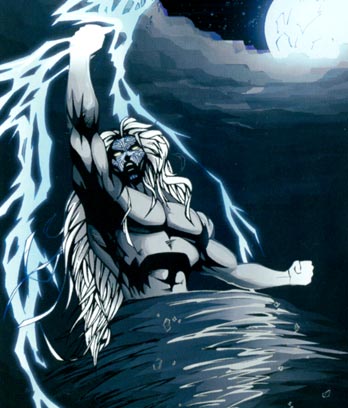Story summary
The weather was very important in Māori life. The seasons, the wind and the rain affected daily activities, especially growing crops and fishing. There are dozens of words to describe the weather. There are also stories to explain wind, thunder, rainbows and other natural events.
Tāwhirimātea’s battle
In Māori tradition, Tāwhirimātea is the god of the weather. His parents were Ranginui (the sky father) and Papatūānuku (the earth mother), who lay close together. To let light into the world, Tāwhirimātea’s brothers separated their parents. But Tāwhirimātea did not agree to this. To show his anger he sent out his children, the four winds, and clouds that brought rain and thunderstorms.
This destroyed trees in the forests ruled by his brother Tāne. But Tāwhirimātea could not defeat his brother Tūmatauenga, god of the people. The battle between people and the weather continues today.
The seasons
- Spring is the time for digging the soil, ready for planting. The word for spring, kōanga, includes the word kō – a digging stick. Spring begins in September in the southern hemisphere.
- In summer (raumati) a bright star, called Antares or Rehua, appears. The cicadas that sing in warm weather are called Rehua’s birds.
- Autumn (ngahuru) is often a good time, because food is harvested. The name ngahuru means ten: February-March is the tenth month in the Māori calendar.
- In winter a star called Sirius rises. Māori call it Takurua, which also means winter.
Clouds (kapua)
Different cloud patterns are named after familiar things, such as a belt, or rows of soil. People predict the weather from certain clouds. Clouds that bring rain and wind are called ‘atiru’.
Rain (ua)
It often rains in New Zealand, so there are dozens of words to describe rain. Raindrops are linked with the sadness of death, because they fall like tears.
Wind (hau)
Tribes have their own names for local winds. In Taranaki, ‘pieke’ is the east wind with rain. Tohunga (priests) used prayers to change the winds, for instance so that people could go fishing.
Thunder and lightning
Whaitiri is the goddess of thunder, which also has other names. Tama-te-uira is the god of lightning. A lightning strike on a tribal mountain is a sign of death, perhaps the passing of an important chief.





